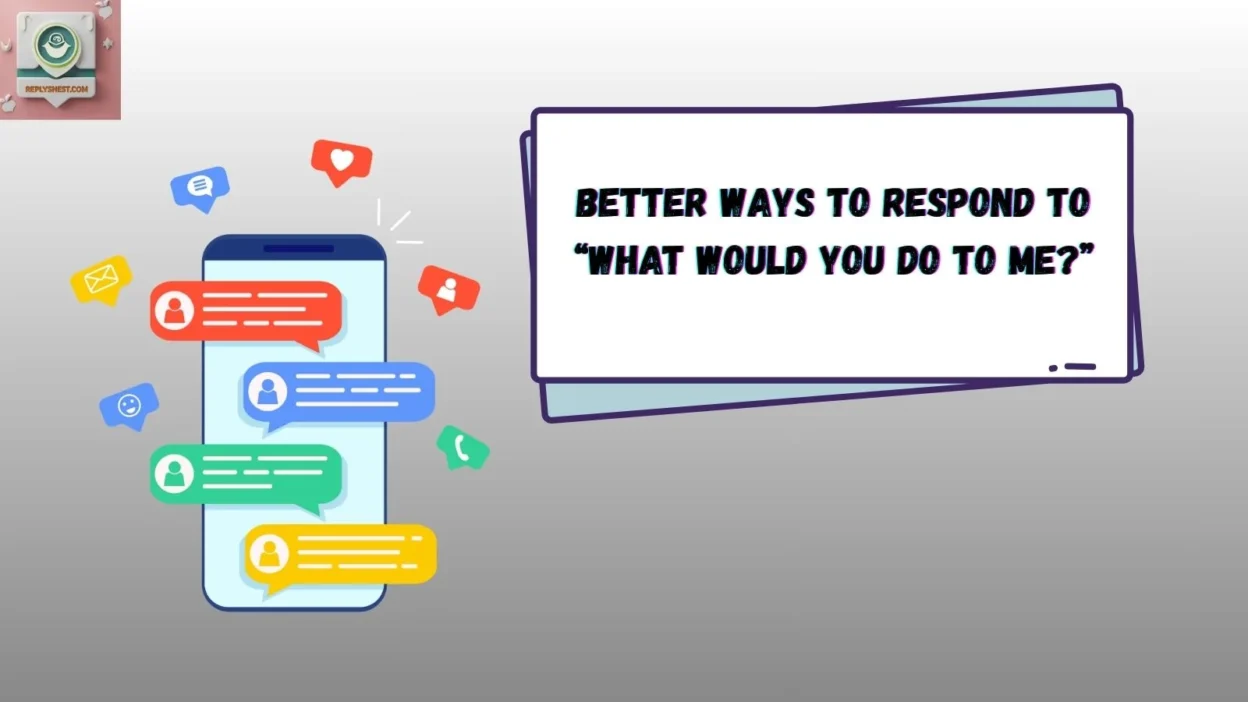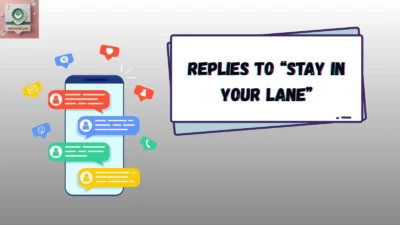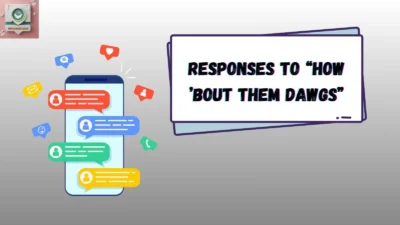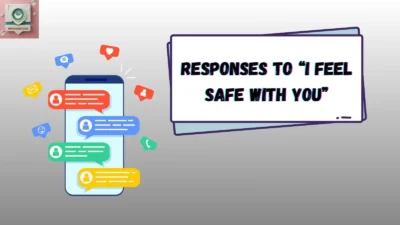When someone asks, “What would you do to me?”, your response depends on the context and your comfort level. If it feels inappropriate or makes you uncomfortable, it’s okay to politely set boundaries and disengage from the conversation. Be honest and directly express your feelings—say that the question feels too personal or out-of-character for the situation. Your well-being always matters more than keeping the tone light. Better Ways to Respond to “What Would You Do To Me?”.
If you still want to keep things friendly, you can redirect with a playful or lighthearted comment, like suggesting a shared activity such as a game night, go-karting, or a walk in the park. These ideas help move the topic toward something positive, fun, and comfortable for both sides.
On the other hand, if the flirting feels natural and you share a romantic or flirty connection, you can respond with thoughtful, enticing, or even affectionate answers. Mentioning shared hobbies, a delicious meal at a restaurant, or a stroll under the stars can make the interaction feel genuine and memorable. I once turned such a provocative question into a playful discussion about our favorite music and movies, which helped us get to know each other better without crossing any boundaries.
It’s about reading the situation, keeping your confidence, and using communication as your key. Whether you’re talking to a partner, acquaintance, or even a stranger, the goal is to create comfortable, uplifting, and enjoyable moments that build real connections, not discomfort.
1. “Depends—what are you hoping I’d do?”
Best Use: When you want to keep things playful and turn the question back on them.
Not to Use: If the tone feels aggressive or uncomfortable.
Other Ways to Say:
- “I don’t know, what do you have in mind?”
- “Guess it depends on your imagination.”
Example:
Them: “What would you do to me?”
You: “Depends—what are you hoping I’d do?”
2. “I’d probably start by asking how your day’s been.”
Best Use: To shift the tone from flirty to friendly without being dismissive.
Not to Use: When you want to keep the flirty energy going.
Other Ways to Say:
- “I’d start with a good conversation.”
- “I’d make sure you’re smiling first.”
Example:
You: “I’d probably start by asking how your day’s been—it’s only fair.”
3. “Only the kind of things that make you laugh.”
Best Use: To keep things light and charming without crossing boundaries.
Not to Use: If the other person expects a serious or deep answer.
Other Ways to Say:
- “Only the fun stuff.”
- “Just the things that keep your mood up.”
Example:
You: “What would I do? Probably just make you laugh until you forget the question.”
4. “That depends—are we talking hypothetically or dangerously?”
Best Use: Perfect for teasing and showing confidence.
Not to Use: With someone who might take it too literally.
Other Ways to Say:
- “Clarify first—safe zone or wild zone?”
- “Are you ready for that answer?”
Example:
You: “That depends—are we talking hypothetically or dangerously?”
5. “Honestly? I’d just listen.”
Best Use: When you want to show emotional maturity and care.
Not to Use: If the conversation is purely lighthearted or flirty.
Other Ways to Say:
- “I’d make sure you feel heard first.”
- “I’d listen before I act.”
Example:
You: “Honestly, I’d just listen. People need that more than anything.”
6. “Probably buy you coffee first.”
Best Use: Light, funny, and disarming. Great for playful exchanges.
Not to Use: In a serious or intense emotional moment.
Other Ways to Say:
- “Let’s start with coffee and go from there.”
- “I’d say caffeine before chaos.”
Example:
You: “I’d probably buy you coffee first—can’t make plans without caffeine.”
7. “Depends—are we in a movie or real life?”
Best Use: Great for witty and imaginative conversations.
Not to Use: When the person expects a genuine answer.
Other Ways to Say:
- “Are we talking fantasy or reality here?”
- “Is this a script or a moment?”
Example:
You: “Depends—are we in a movie or real life?”
8. “I’d treat you the way I want to be treated.”
Best Use: Ideal for grounded, thoughtful moments.
Not to Use: When humor or playfulness fits better.
Other Ways to Say:
- “I’d show you the same respect I value.”
- “With kindness, always.”
Example:
You: “What would I do? Treat you the way I’d want to be treated.”
9. “I’d make sure you’re comfortable first.”
Best Use: For showing empathy and safety.
Not to Use: When the tone is just joking or playful.
Other Ways to Say:
- “I’d make sure you feel safe.”
- “Comfort first, always.”
Example:
You: “I’d make sure you’re comfortable first—that’s how things should be.”
10. “I’d try to make you smile.”
Best Use: Perfectly simple and kind.
Not to Use: When the context is overly serious or sensual.
Other Ways to Say:
- “I’d just make you happy.”
- “I’d do my best to bring a smile.”
Example:
You: “What would I do? Probably make you smile, honestly.”
11. “I’d change the subject—this one’s dangerous.”
Best Use: When you want to dodge flirtation with humor.
Not to Use: With someone who takes teasing personally.
Other Ways to Say:
- “Next topic before I get in trouble.”
- “Let’s keep it safe!”
Example:
You: “I’d change the subject—this one’s dangerous.”
12. “I’d keep you guessing.”
Best Use: Flirty and confident.
Not to Use: If the person doesn’t enjoy playful teasing.
Other Ways to Say:
- “Now that’s for me to know.”
- “I’ll let the suspense do its thing.”
Example:
You: “I’d keep you guessing—mystery’s part of the fun.”
13. “Probably nothing dramatic—I’m pretty chill.”
Best Use: For down-to-earth responses.
Not to Use: When trying to build romantic tension.
Other Ways to Say:
- “I’d just keep things calm.”
- “I’m not a drama person.”
Example:
You: “Probably nothing dramatic—I’m more of a chill person.”
14. “I’d make you think twice before asking that again.”
Best Use: Playfully teasing or confidently humorous.
Not to Use: When the tone feels confrontational.
Other Ways to Say:
- “Careful, you might regret that question.”
- “You’ll wish you hadn’t asked.”
Example:
You: “I’d make you think twice before asking that again.”
15. “I’d do whatever makes the moment right.”
Best Use: When you want to sound thoughtful and spontaneous.
Not to Use: If the person wants a specific answer.
Other Ways to Say:
- “Whatever feels right at the time.”
- “I’d go with the flow.”
Example:
You: “I’d do whatever makes the moment right—no scripts here.”
16. “I’d probably tell you to stop asking dangerous questions.”
Best Use: To keep humor alive while drawing a boundary.
Not to Use: In deeply romantic or serious chats.
Other Ways to Say:
- “You’re asking for trouble!”
- “Dangerous territory!”
Example:
You: “I’d probably tell you to stop asking dangerous questions.”
17. “I’d do my best to understand you.”
Best Use: When you want to emphasize emotional depth.
Not to Use: If the tone is flirty or sarcastic.
Other Ways to Say:
- “I’d listen to really get you.”
- “Understanding first, always.”
Example:
You: “What would I do? I’d try to understand you better.”
18. “I’d surprise you.”
Best Use: Fun, confident, and mysterious.
Not to Use: If surprises make the other person anxious.
Other Ways to Say:
- “You’ll have to find out.”
- “I’d rather show than tell.”
Example:
You: “I’d surprise you—that’s my specialty.”
19. “I’d probably laugh, honestly.”
Best Use: When you want to diffuse tension or flirt lightly.
Not to Use: If the other person expects a sincere or deep reply.
Other Ways to Say:
- “I’d laugh and dodge the question.”
- “Probably just giggle my way out.”
Example:
You: “Honestly? I’d probably laugh.”
20. “I’d treat you like someone who deserves respect.”
Best Use: For serious, emotionally grounded exchanges.
Not to Use: In playful or joking conversations.
Other Ways to Say:
- “With kindness and care.”
- “With the respect you deserve.”
Example:
You: “I’d treat you with respect—that’s my rule.”
21. “I’d make sure we both laugh about this later.”
Best Use: Playful, mature, and balanced.
Not to Use: If the moment feels tense or awkward.
Other Ways to Say:
- “We’d have a good laugh about it.”
- “I’d make it memorable, in a funny way.”
Example:
You: “I’d make sure we both laugh about this later.”
22. “You don’t want me to answer that.”
Best Use: For teasing or playful mystery.
Not to Use: If the person is being genuine or serious.
Other Ways to Say:
- “That’s classified.”
- “Let’s keep that a mystery.”
Example:
You: “You don’t want me to answer that.”
23. “I’d ask you to define ‘do.’”
Best Use: Clever and humorous; perfect for witty people.
Not to Use: If the person dislikes wordplay.
Other Ways to Say:
- “You’ll have to be more specific.”
- “Define ‘do’ for me.”
Example:
You: “I’d ask you to define ‘do.’ Words matter!”
24. “I’d probably just smile and let you wonder.”
Best Use: When you want to keep things subtle and intriguing.
Not to Use: If directness is required.
Other Ways to Say:
- “I’d smile—mystery is fun.”
- “I’d let my silence do the talking.”
Example:
You: “I’d probably just smile and let you wonder.”
25. “I’d make sure you never regret asking.”
Best Use: Confident, flirty, and charismatic.
Not to Use: In professional or platonic contexts.
Other Ways to Say:
- “You’ll thank yourself for asking.”
- “I’d make it worth your while.”
Example:
You: “I’d make sure you never regret asking.”
Conclusion
Responding to “What would you do to me?” doesn’t have to feel awkward or loaded. The key is reading the tone, matching the energy, and protecting your comfort. You can keep things light, kind, flirty, or profound, depending on your relationship and the situation.
I’ve learned (sometimes the hard way) that your tone sets the boundary. A calm, confident, or humorous response shows control, while a caring one builds trust. Always lean into respect, kindness, and authenticity—that’s where real connection happens.
Editor’s Picks (and Why People Love Them)
- “Depends—what are you hoping I’d do?” – Balanced, playful, and smart.
- “Honestly? I’d just listen.” – Emotionally mature and genuine.
- “I’d probably buy you coffee first.” – Disarming and relatable.
- “I’d make sure you’re comfortable first.” – Shows emotional intelligence.
- “I’d keep you guessing.” – Fun and mysterious.
- “I’d treat you like someone who deserves respect.” – Mature and classy.
- “You don’t want me to answer that.” – Teasing but still safe.
- “I’d make you think twice before asking that again.” – Witty and confident.
- “I’d do whatever makes the moment right.” – Natural and spontaneous.
- “I’d surprise you.” – Memorable and bold.



